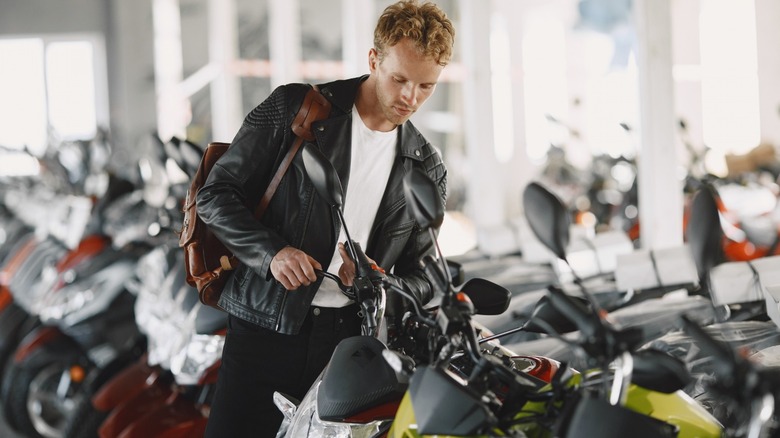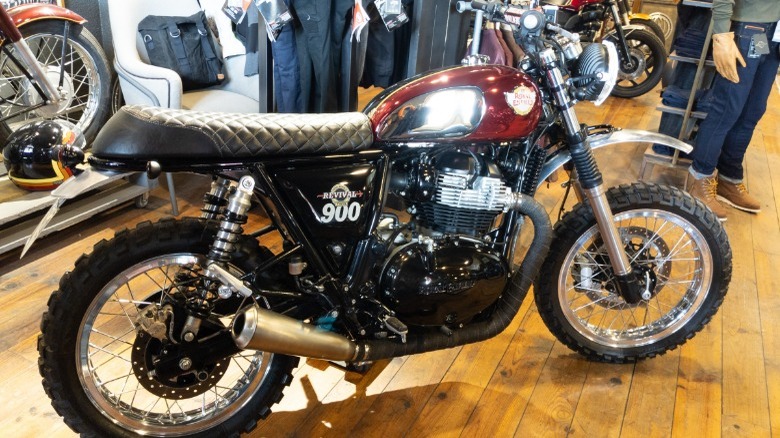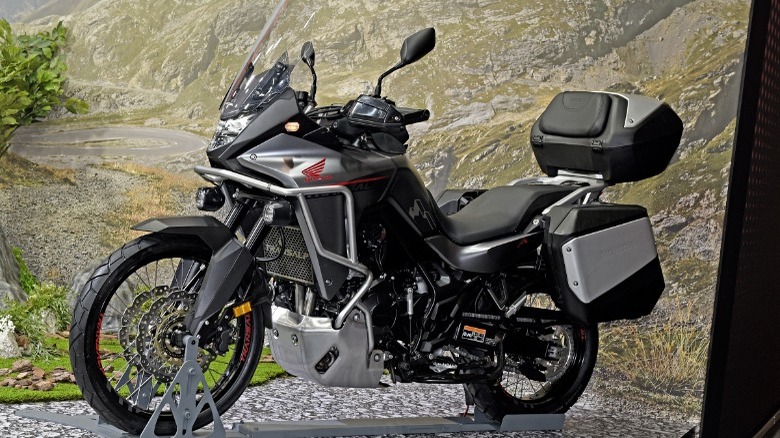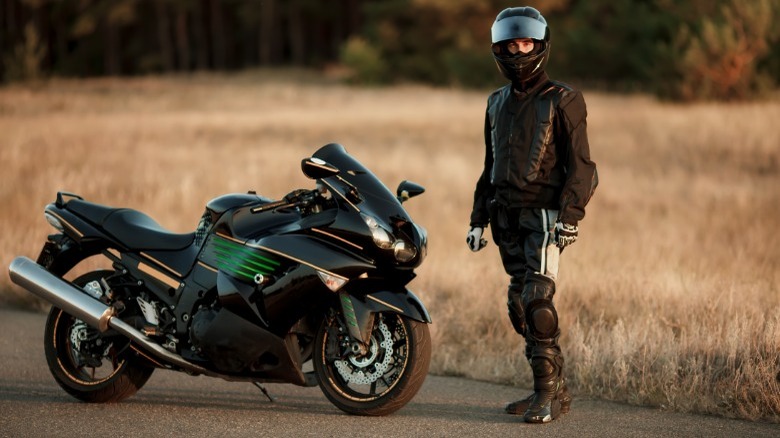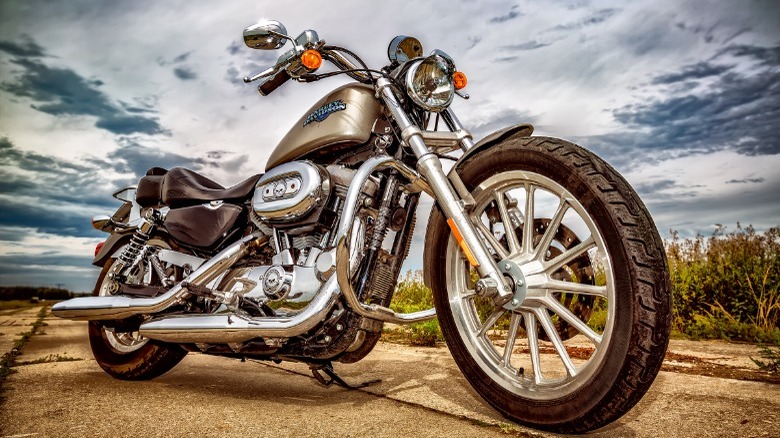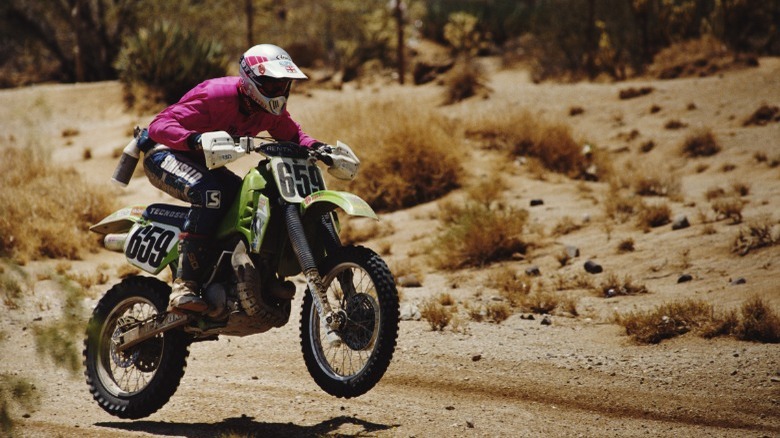The Main Motorcycle Types Every Rider Should Know
One of the best things about motorcycles is the diversity. Not everybody rides motorcycles for the same reasons, and everybody has their own preference. The very fortunate among us may even have more than one type of bike to use when the occasion calls for it, but there's something to be said for picking the right horse for the right course.
Motorcycling really kicked off when makers started putting motors into bicycles, with manufacturers like Royal Enfield, Triumph, and Harley Davidson taking the idea and running with it — producing vehicles that went ever faster as time went on. From the beginning, motorcycles were vehicles ripe for customization, and riders have always modified their machines to be more fit for purpose.
Fast forward to the middle of the 20th century, when manufacturers had caught on that motorcyclists all wanted different things, and we would start to see motorcycle designs starting to properly delineate. Nowadays, there's a smorgasbord of different bikes available for all riders.
Standard bikes and their derivatives — scramblers and café racers
Standard bikes are what you might think of when you hear the word motorcycle. Characterized by comfortable seating, footpeg position, and neutral riding stance, the standard bike is a bit of a do-it-all machine. They're not made for speed, but the neutral footpeg location and controls accommodates an aggressive rider when necessary.
Likewise, standard bikes like the Triumph Bonneville are not made for the long haul, but they're comfortable enough that you can do a long journey on one if you need to. True to the motorcycle culture, standard bikes are ripe for modification. Standard bikes are commonly converted into naked café racers and scramblers, either by manufacturers or after the fact by owners.
A café racer, like Royal Enfield's Continental GT 650, is basically a standard bike that has been stripped of all excess components and modified to suit a more aggressive riding position — all in the name of speed. Traditional café racers feature clip-on handlebars instead of the regular bars found on a standard bike, and rear-set footpegs. Both of these modifications encourage a rider to lean forward, placing more weight on the front wheel, allowing for more aggressive riding and more control over the motorcycle at speed.
Scramblers, on the other hand, take things in the opposite direction, but get similar parts. Instead of modifications aimed at on-road performance, the typical scrambler is a standard bike that's been modified for off-road use. The addition of knobby tires and tall handlebars, as well as the removal of excess weight, all aim to make a standard bike handle better in the dirt. Most scramblers will also feature re-routed exhausts and an engine guard to better handle harsh impacts on rocks and the like.
Adventure and touring bikes
Adventure bikes are what happens when a designer looks at a scrambler, realizes it really isn't the right tool for going off-road, and decides to do it better. Adventure bikes generally do everything a scrambler does but better, offering a reasonable balance between road and off-road performance. Usually, adventure bikes are based around the engine platform of road bikes, feature longer suspension travel, larger wheels, and better ground clearance than scramblers.
Perhaps the most famous in the adventure bike segment are the heavy-hitting BMW R1250 GS and Honda Africa Twin, but it's only one of a growing variety of adventure bikes on the market, with middleweight examples like the Yamaha Ténéré 700 gaining traction in recent years. Smaller adventure bikes, like the dirt-oriented Royal Enfield Himalayan and more road-biased Honda CB500X provide great entry points into the adventure space for those not looking for gobs of power and speed.
While adventure bikes generally excel just as much on the road as in the dirt, the more road-biased versions are often called adventure-tourers. Designed for long days in the saddle, touring bikes and adventure-tourers feature much of the same easy, upright ergonomics and roominess of an adventure bike, but with more road-going performance in mind.
Gone are the 50/50 tires fitted to 21-inch wire-spoke rims, in favor of 17 or 19-inch all-weather tires on lightweight alloys. Both adventure bikes and adventure-touring bikes generally have a ton of manufacturer/aftermarket customization and luggage options for longer trips.
Sport bikes and their sport-touring cousins
Sports bikes take the adrenaline-pumping excitement of motorcycling and distill it into a high-performance, lightweight package that sacrifices just about everything in the name of speed. Usually featuring potent, high-revving motors, sports bikes are laser-focused on performance and aerodynamics. They have lightweight fairings, drop bars, rear-set footpegs, and a small windscreen for the rider to tuck behind, all in the name of aerodynamics.
Sport bikes are generally not comfortable, and if you plan on taking one on a long trip, you're going to want to pack light, for luggage options are slim. You'll also want to stop frequently on longer trips to give your wrists and back a break from the aggressive riding position.
Arguably the biggest problem with sport bikes is their propensity to deliver power high up in the rev range, as opposed to the low-down torque that's beneficial for daily use. Their rev-happy characteristic makes even smaller 600cc sport bikes ill-suited for beginners or someone looking to commute on a motorcycle, but it makes them excellent track toys.
Sport-touring bikes, on the other hand, usually take what's good about a sport bike — lightning-fast acceleration, sharp handling, and high performance — and put it in a slightly more comfortable guise. Sport-touring bikes are designed to be able to travel long distances and have a bit of reckless fun on a twisty canyon road once you get there. Sport-touring machines often feature more luggage options and better weather protection than a pure sport bike.
Cruisers, baggers, and touring bikes
Cruisers are a bit of a hot-button topic in motorcycling. A lot of motorcyclists hate cruisers because they're sluggish, handle poorly, and usually accompany a particular scene that may think gives motorcyclists a bad name. Riders of cruisers, on the other hand, rave about the heritage and emotion their bikes evoke, and about the comfort they offer for long rides. Usually, cruisers are built with large, heavy engines with buckets of low-down torque, like the 1.8-liter Harley-Davidson Fat Bob 114 with its 118 foot-pounds of torque at 3500 rpm.
Cruisers generally feature a laid-back riding position with both footpegs and handlebars positioned in front of the rider to varying degrees. Fans of cruisers will tell you this relaxed riding position allows them to take long, relaxed rides on the open highway, while others will tell you that it forces you to absorb rough roads and impacts with your spine, instead of being able to transfer weight to your legs to take the edge off.
There is some variety among cruisers, with baggers adapting the cruiser design with windscreens and stylish luggage options for long. Comfortable tourers, like the venerable Honda Goldwing, take it a step further with full fairings and weather protection in addition to ample luggage space.
Off-road and dual-sport bikes
While the majority of motorcycles have some sort of on-road performance ambitions, dual-sport and dirt bikes are the exception, with dual-sport bikes just barely taking road riding into account. As the name suggests, dirt bikes are meant for dirt. Motocross bikes are lightweight racers and usually feature displacements of under 500cc, not made for outright speed, but rather for acceleration, maneuverability and agility on the trail or motocross track.
Dual-sport and enduro bikes, in general, are heavier than their motocross counterparts, with more of a focus on durability and comfort for longer trips in the dirt. They also often feature larger motors than motocross bikes, with the KTM Enduro 690 R being a staple in the dual-sport and enduro community.
Street-legal dual-sports bikes are made for riders who want to ride their bike to the trail, enjoy their singletrack adventure, and then still ride home at the end of the day. The road-going equipment on dual-sport bikes can make them a tad heavier than enduro bikes, but they are generally still way lighter and more capable than the lightest adventure bikes and scramblers.
While they're perfectly serviceable as road-going transport, dual-sport bikes often lack the sophistication and comfort of even the most basic off-road-capable adventure bikes. If your idea of off-road riding is a bumpy fire road, you may be better served by a comfortable adventure bike.
